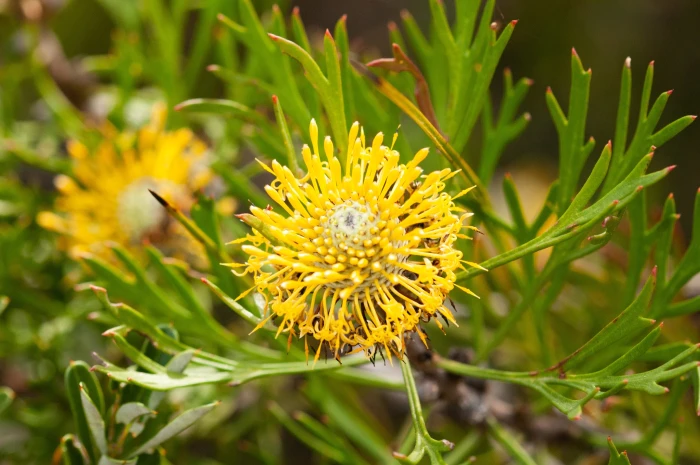Broad-Leaved Drumsticks
(Isopogon anemonifolius)
Broad-Leaved Drumsticks (Isopogon anemonifolius)
/
/

Rolf Lawrenz
CC BY 4.0
Image By:
Rolf Lawrenz
Recorded By:
Copyright:
CC BY 4.0
Copyright Notice:
Photo by: Rolf Lawrenz | License Type: CC BY 4.0 | License URL: http://creativecommons.org/licenses/by/4.0/ | Rights Holder: Rolf Lawrenz | Publisher: iNaturalist | Date Created: 2019-09-22T14:20:50-07:00 |























































Estimated Native Range
Climate Requirements for Brooklyn Center, Minnesota
| This Plant | Your Site | Plant Suitability for Your Location | ||
|---|---|---|---|---|
| • Precipitation | 42" - 50" | 30" | Your precipitation may be insufficient for this plant. Irrigate N" / year. | Irrigate N" / year |
| • High Temp. | 74°F - 81°F | 85°F | Your summer temperatures are normal for this plant. | Excellent |
| • Low Temp. | 36°F - 46°F | 3°F | Your winter temperatures are normal for this plant | Excellent |
This plant should grow well at your location with about N inches per year (Y minutes per month) of irrigation.
Summary
Isopogon anemonifolius, commonly known as Broad-leaved Drumsticks, is an evergreen shrub native to the sandy heath and open forests of coastal New South Wales, Australia. It typically grows to a height of 1-2 meters with a similar spread, featuring narrow, divided leaves that resemble those of the anemone, hence the species name. The plant produces distinctive yellow inflorescences in late spring to early summer, which are spherical in shape and prominently displayed, giving rise to the common name "drumsticks." These are followed by persistent grey cone-like fruiting bodies that contain small, hairy seeds within the old flower parts. Broad-leaved Drumsticks can live up to 60 years and are valued for their longevity and unique appearance.
In the garden, Isopogon anemonifolius is appreciated for its striking flowers and architectural form, making it a great choice for native plant gardens, rockeries, and as a feature plant in mixed borders. It is also used in floral arrangements. This shrub is relatively easy to maintain, requiring minimal pruning to remove spent flowers and maintain shape. It thrives in a sunny to partly shaded position with well-drained, sandy soil. While it can tolerate medium amounts of water, it is also quite drought-resistant once established. Gardeners should be aware that it can be susceptible to root rot if overwatered or planted in poorly drained soils.CC BY-SA 4.0
In the garden, Isopogon anemonifolius is appreciated for its striking flowers and architectural form, making it a great choice for native plant gardens, rockeries, and as a feature plant in mixed borders. It is also used in floral arrangements. This shrub is relatively easy to maintain, requiring minimal pruning to remove spent flowers and maintain shape. It thrives in a sunny to partly shaded position with well-drained, sandy soil. While it can tolerate medium amounts of water, it is also quite drought-resistant once established. Gardeners should be aware that it can be susceptible to root rot if overwatered or planted in poorly drained soils.CC BY-SA 4.0
Plant Description
- Plant Type: Shrub
- Height: 2-3 feet
- Width: 1-2 feet
- Growth Rate: Moderate
- Flower Color: Yellow
- Flowering Season: Spring
- Leaf Retention: Evergreen
Growth Requirements
- Sun: Full Sun, Part Shade
- Water: Medium
- Drainage: Medium, Fast
Common Uses
Bee Garden, Bird Garden, Butterfly Garden, Low Maintenance, Rock Garden, Showy Flowers
Natural Habitat
Sandy heath and open forests of coastal New South Wales
Other Names
Common Names:
Scientific Names: Isopogon anemonifolius, Protea anemonifolia, Protea apifolia, Protea tridactylites, Isopogon anemonifolius f. simplicifolia, Atylus anemonifolia, Isopogon anemonifolius var. glaber, Isopogon anemonifolius var. pubescens, Isopogon anemonifolius var. pubiflorus
GBIF Accepted Name: Isopogon anemonifolius (Salisb.) Knight